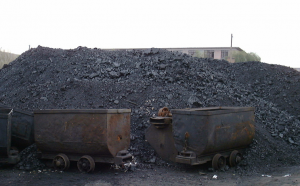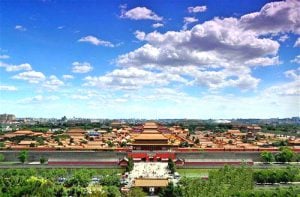Air pollution levels fell by 10.3% in China last year. However, 80% of cities are still in breach of national standards, according to a new report by Greenpeace East Asia.
China’s efforts to clean up air pollution appear to be having an effect. The average concentration of dangerous PM2.5 particulate in the air of 366 major cities has fallen to 50.2 micrograms per cubic metre. However, it remains well over the government-set standard of 35 micrograms and that of the World Health Organisation, which is 10 micrograms.
The five municipalities or provinces with the worst levels of PM2.5 pollution were Henan, Beijing, Hebei, Tianjin and Shandong. The purest air was found in Hainan, Tibet, Yunnan, Fujian and Guizhou, according to the 2015 China City Rankings.
Greenpeace’s city rankings are based on real-time monitoring data published by the cities themselves.The report praised China’s progress in making air quality data public. In 2014, only 190 Chinese cities disclosed their PM2.5 levels. In 2015, 367 cities published six different types of air quality measurements, including the level of PM2.5 in the air. This is the largest release of data since new government standards came into effect in 2012.
Beijing’s average PM2.5 level fell 3.3% year-on-year, to 80.4 micrograms per cubic metre between 2014 and 2015. However in Shanghai an increase of 3% was seen, pushing levels up to 53.9 micrograms.
Environmental campaigner Dong Liansai told chinadialogue that the increase in Shanghai’s pollution is partly down to the government’s failure to enforce clear targets for reducing coal consumption.
By contrast, Beijing and its surrounding areas are subject to much stricter air quality standards and coal reduction targets. By 2017, Beijing aims to have reduced coal use by 13 million tonnes per year, Tianjin by 10 million tonnes, Hebei by 40 million tonnes, and Shandong by 20 million tonnes.
Looking at the data alone, most parts of the country appear to have had some success in combating air pollution. But public sentiment suggests that the winter of 2015 was particularly bad for smog, symbolised by Beijing issuing its first smog ‘red alert‘ at the start of December.
See also: Can China meet its 2017 air quality air goals?
Smog is more common in winter, as greater amounts of coal are burned for heat. Last winter, 18 Chinese cities saw 20 or more days of smog: Baoding had 35, while Beijing had 26. Seventy-six cities suffered three or more consecutive days of heavy pollution, which twice triggered Beijing’s Heavy Air Pollution Emergency Response Plan – the ‘red alert’.
Data from Weather Underground, an online weather service, found that last winter had more of the calm and humid days that helps smog form – 41 days met these conditions in November and December, compared to 19 in the same period in 2014.
While weather conditions were a major cause of the high incidence of winter smog, coal-burning is still the major cause of air pollution in China.
Greenpeace recommends that the government sets a national coal consumption cap for the 13th Five Year Plan period (2016 -2021), to further improve air quality. It also calls for quantified targets for reducing PM2.5 levels nationally, not just for certain municipalities and provinces.








